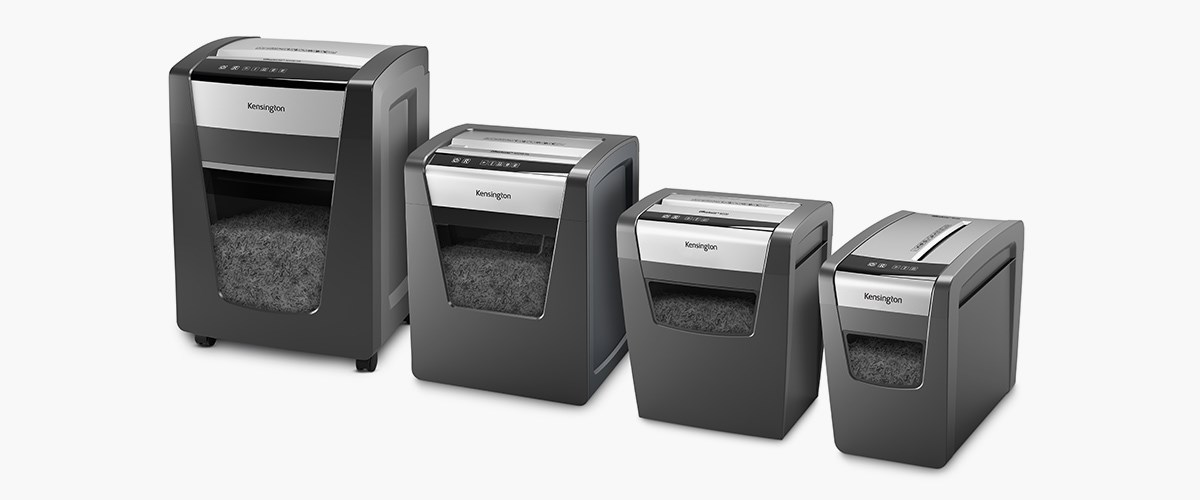
In today’s world, privacy and data security are more important than ever, and selecting the right paper shredder is a critical step toward ensuring sensitive documents are safely disposed of. Whether for personal, office, or corporate use, the decision between strip cut, cross cut, and micro cut shredders can significantly impact the security of your data.
Understanding Your Shredding Needs: Strip Cut vs. Cross Cut vs. Micro Cut
Before diving into the various types of shredders, it’s essential to evaluate your specific shredding requirements:
- How often will you shred documents?
- What’s the sensitivity level of the information?
- How much space do you have for the shredder?
Answering these questions will help you choose a shredder that matches your security needs, usage, and available workspace.
Types of Shredders
Strip Cut Shredders
Strip cut shredders are among the most basic and common shredding machines. They cut paper into long, narrow strips, making them suitable for light shredding tasks.
Advantages of Strip Cut Shredders:
- High Capacity: These shredders can process up to 30 pages at once, making them fast and efficient for large volumes.
- Lower Maintenance: Strip cut shredders typically require less frequent oiling, reducing maintenance time.
Disadvantages of Strip Cut Shredders:
- Minimal Security: The long strips produced can potentially be reassembled, posing a security risk.
- Growing Costs: Strip cut models are becoming less budget-friendly as the demand for cross cut shredders increases.
Cross Cut Shredders
Cross cut shredders offer a significant security upgrade by cutting paper both lengthwise and crosswise into smaller confetti-like pieces.
One great option is the OfficeAssist™ Shredder M100 Anti-Jam Cross Cut. With its P-4 cross-cut capability, ability to shred 10 sheets at once, and 6-gallon/225-sheet bin, it’s an ideal choice for those looking for a reliable manual-feed shredder. The convenience of not having to remove staples and paper clips adds to its efficiency.
Advantages of Cross Cut Shredders:
- Better Security: Cross cut shredders offer increased security by producing smaller pieces, making document reconstruction much more difficult.
- Fewer Bag Changes: Due to smaller paper particles, bins require fewer changes.
Disadvantages of Cross Cut Shredders:
- Lower Capacity: These models often handle fewer sheets per pass, which may slow down the shredding process for bulkier tasks.
- Higher Maintenance: Cross cut shredders need more regular oiling to keep their complex mechanisms in top shape.
Micro Cut Shredders
For those who require maximum security, micro cut shredders are the gold standard. These machines shred documents into tiny, confetti-like particles, making it nearly impossible to reconstruct shredded information.
For high-volume shredding needs, the OfficeAssist™ Auto Feed Shredder A6000-HS Anti-Jam Micro Cut can handle up to 600 sheets at once with its patented auto feed and a 4-digit PIN lock for added security. This shredder is perfect for large offices that require fast, secure, and continuous shredding operations.
If you’re looking for a smaller capacity auto feed shredder, the OfficeAssist™ Auto Feed Shredder A1500-HS Anti-Jam Micro Cut is designed for more compact offices, with the ability to handle 150 sheets in one go. It’s efficient, secure, and ideal for smaller departments.
Advantages of Micro Cut Shredders:
- Maximum Security: Micro cut shredders are ideal for shredding highly sensitive data, such as financial records and legal documents.
- Compact Shreds: Micro cut models produce smaller pieces, meaning bins need to be emptied less frequently.
Disadvantages of Micro Cut Shredders:
- Cost: These shredders tend to be pricier than strip or cross cut models.
- Lower Capacity: Due to the intricate cutting process, micro cut shredders typically handle fewer sheets at once.

Factors to Consider When Choosing a Shredder
When deciding between these shredders, you need to consider several factors:
-
Security Needs
For highly sensitive or confidential documents, micro cut shredders provide the necessary security to protect your information. The OfficeAssist™ Auto Feed Shredder A6000-HS is a great example for those needing advanced document security. -
Shredding Volume
If you have large volumes of documents to shred regularly, a strip cut shredder’s higher sheet capacity may appeal to you. However, for occasional shredding or home use, a cross cut or micro cut shredder like the OfficeAssist™ Shredder M100 or OfficeAssist™ Auto Feed Shredder A1500-HS might be more practical. -
Space and Capacity
Consider the available space in your home or office and how much capacity you need. A compact shredder is ideal for smaller workspaces, while heavy-duty shredders are better for large-scale use. -
Maintenance and Durability
Different shredders require varying levels of maintenance. If you prefer a low-maintenance option, a strip cut shredder might be more appealing. However, cross cut and micro cut shredders, while more secure, typically require more frequent oiling.
Making the Right Choice
Ultimately, selecting the right shredder depends on your security requirements, document volume, and budget. If you need speed and efficiency, a strip cut shredder might be the best choice. For those looking for enhanced security, particularly for highly sensitive documents, a cross cut or micro cut shredder offers the best protection.
Learn more about Kensington's Paper Shredders
